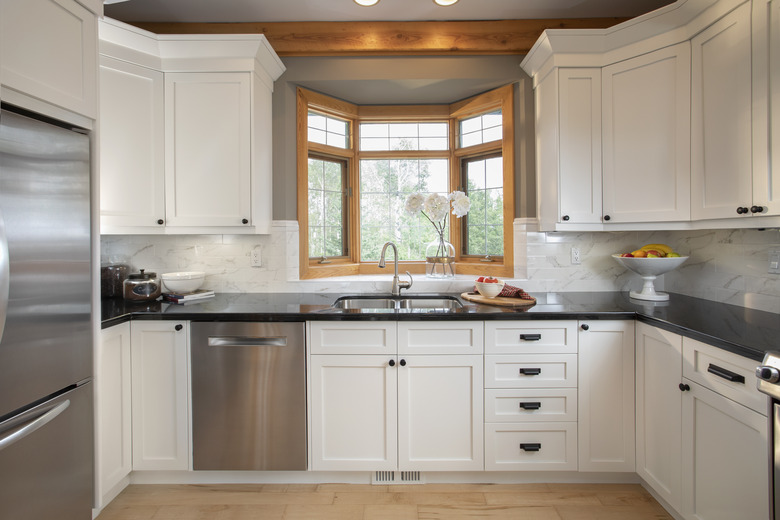Inexpensive Backflow Preventer For Dishwashers
Dishwashers and sinks usually connect to the same drain. If the sink includes a garbage disposal, both the sink and the dishwasher discharge wastewater through it. Without some type of backflow prevention, dirty water from a clogged sink drain can flow backward through the drain and contaminate the dishwasher. Some dishwashers contain one-way drain valves that prevent backflow, but others depend on a simple installation trick. Local building codes might require a separate backflow preventer at the sink.
Backflow
Backflow
Backflow preventers stop water in contaminated pipes from siphoning backward into sanitary parts of the home plumbing. Garden hoses and lawn irrigation systems depend on backflow preventers to keep ground water from flowing into the potable water network. Backflow preventers can isolate the hot-water heater and prevent backflow during pressure drops. Backflow from a clogged sink into a dishwasher won't run back into the supply line, but can flood the dishwasher with dirty water. A dishwasher might contain a simple flapper valve in the drain outlet. If water flows back, water pressure seals the valve.
Air Gaps
Air Gaps
Backflow problems often depend on the siphon effect to pull water backward through the line. An air-gap backflow preventer stops siphoning with a break between pipe sections. Water from the upper drainpipe falls into a wide funnel at the mouth of a lower drain. The gap eliminates siphoning, and any water flowing back simply overflows the lower drain. Air gaps approved for dishwashers mount to the back of the sink deck; if drain water backs up into the sink, the backup can't overflow through the air gap. A sanitary cover hides the dishwasher drain outlet and funnel.
Drain Loops
Drain Loops
Many dishwashers use an even simpler system to stop most backups from reaching the dishwasher. The drain hose connects to the upper part of the garbage disposal or to the sink drain above the S-trap. Dishwashers include enough drain hose to form a higher inverted U underneath the sink. Strapping the hose to the cabinet at the highest possible point beneath the sink places the bend above all but the worst sink backups. The sink must fill completely to pour water back through the hose. Because the bend lacks a true air gap, it does not prevent siphoning if water overflows the bend.
Cost
Cost
Local building codes might require air gaps at the sink, located above the highest fill level, even if your dishwasher includes an integral backflow preventer. Sinks might have unused punch-outs for mounting an air-gap fixture, or an air gap might replace an existing accessory, such as a spray hose. Prices at the time of this publication ranged from approximately $4 for a simple PVC air gap with chrome cover, to nearly $30 for a solid-metal chromed fixture. Modifying sinks with no available mounting holes requires special hole saws designed for cutting accurately through stainless steel or porcelain.
